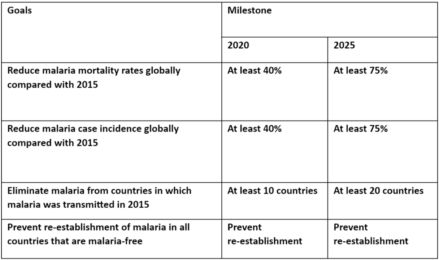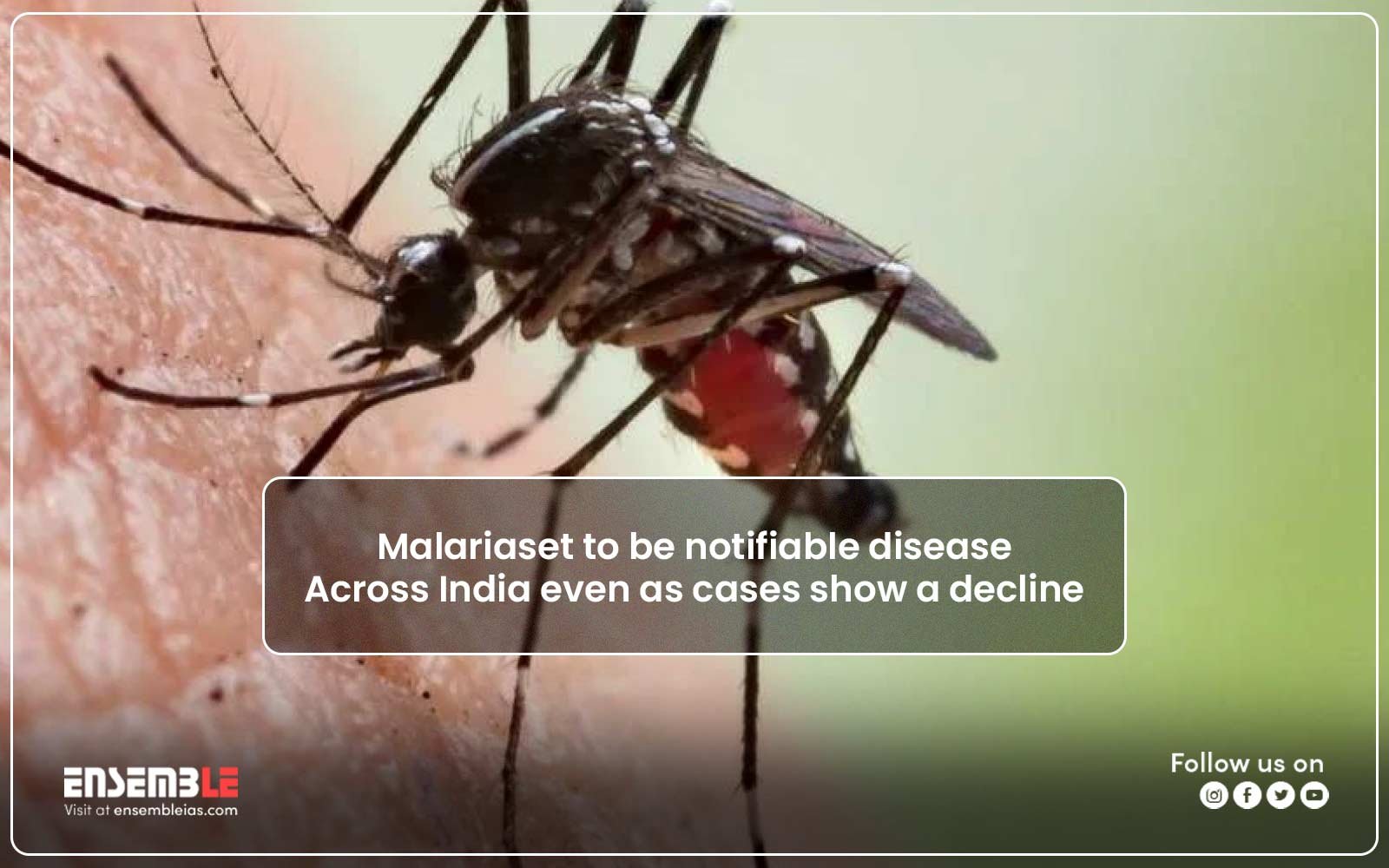Why in news?
– Malaria is all set to become a notifiable disease across India, with Bihar, Andaman and Nicobar Islands and Meghalaya too in the process of putting the vector-borne disease in the category.
– India’s vision to be a malaria-free by 2027 and to eliminate the disease by 2030.
– At the Asia-Pacific Leaders’ Conclave on Malaria Elimination Indian health minister said “ Malaria is not just a public health issue but also a social, economic, and political challenge that
requires the cooperation of all stakeholders”.
– India was the only high-burden, a high-impact country in the southeast Asia region to report a decline in malaria cases in 2020 as compared to 2019. India witnessed a 85.1% decline in
malaria cases and 83.36% decline in deaths during 2015-2022.
– List of notified disease in india-AIDS,hepatitis-B,dengu,malaria,whoping cough,anemia,measles,rabies,vitamin A deficiency, typhoid, scarlet fever,leprosy,cholera,iodine
deficiency,malnutrition,tuberculosis,smallpox plague, diptheria,chicken pox
Malaria
– Malaria is a life-threatening mosquito borne blood disease caused by Plasmodium parasite.
– It is predominantly found in tropical and sub-tropical areas of Africa, South America as well as Asia
– It is preventable as well curable.
Spread-
– The parasites spread through the bites of infected female Anopheles mosquitoes.
– After entering the human body, parasites initially multiply within the liver cells and then attack the Red Blood Cell (RBCS) resulting in their rupture.
– There are 5 parasite species that cause malaria in humans, and 2 of these species- Plasmodium falciparum and Plasmodium vivax- pose the greatest threat.
National framework for malaria
1. National Framework for Malaria Elimination in India (2016-2030)- it aims to eliminate malaria nationally and contribute to improved health, quality of life and alleviation of poverty.
2. National Strategic Plan for malaria elimination (2017-2020)- under the plan India has stratified into four categories based on the malaria burden- category 0 to 3 and have different targets
for each category.
3. National Vector Borne Disease Control Programme (NVBDCP)- it was launched in 2003-2004. It is the central nodal agency for the prevention and control of six vector-borne diseases (VBDs).
(VBDs- Malaria, Dengue, Filariasis, Kala-azar, Japanese Encephalitis and Chikungunya)
NVBDCP is incorporated into the NRHM.
The aim is prevention and control the vector-borne disease.
4. Malaria Elimination Research Alliance- India (MERA-India)- it was launched by the Indian Council of Medical Research (ICMR). It is the conglomeration of partners who are working on malaria
elimination. The purpose of MERA India is to identify, articulate, prioritise and respond to the research needs of the country in a coordinated and combinational way to eliminate malaria
from India by 2030.
World health organisation on Malaria
– The new vaccine “RTS,S/ASO1 (RTS.S)” with its trade name “Mosquirix” was endorsed by the WHO. This is the first and only malaria vaccine to have shown the capability of significantly
reducing malaria in tests done on young African children.
– E-2025 initiative- the E-2020 initiative was launched by WHO in 2017. Building on the successes of the E-2020, WHO has launched the E- 2025 initiative. Asa part of this initiative, WHO has
identified 25 countries that have potential to eliminate malaria within a five years timeline. India is not a part of this initiative.
The global technical strategy for malaria 2016-2030





